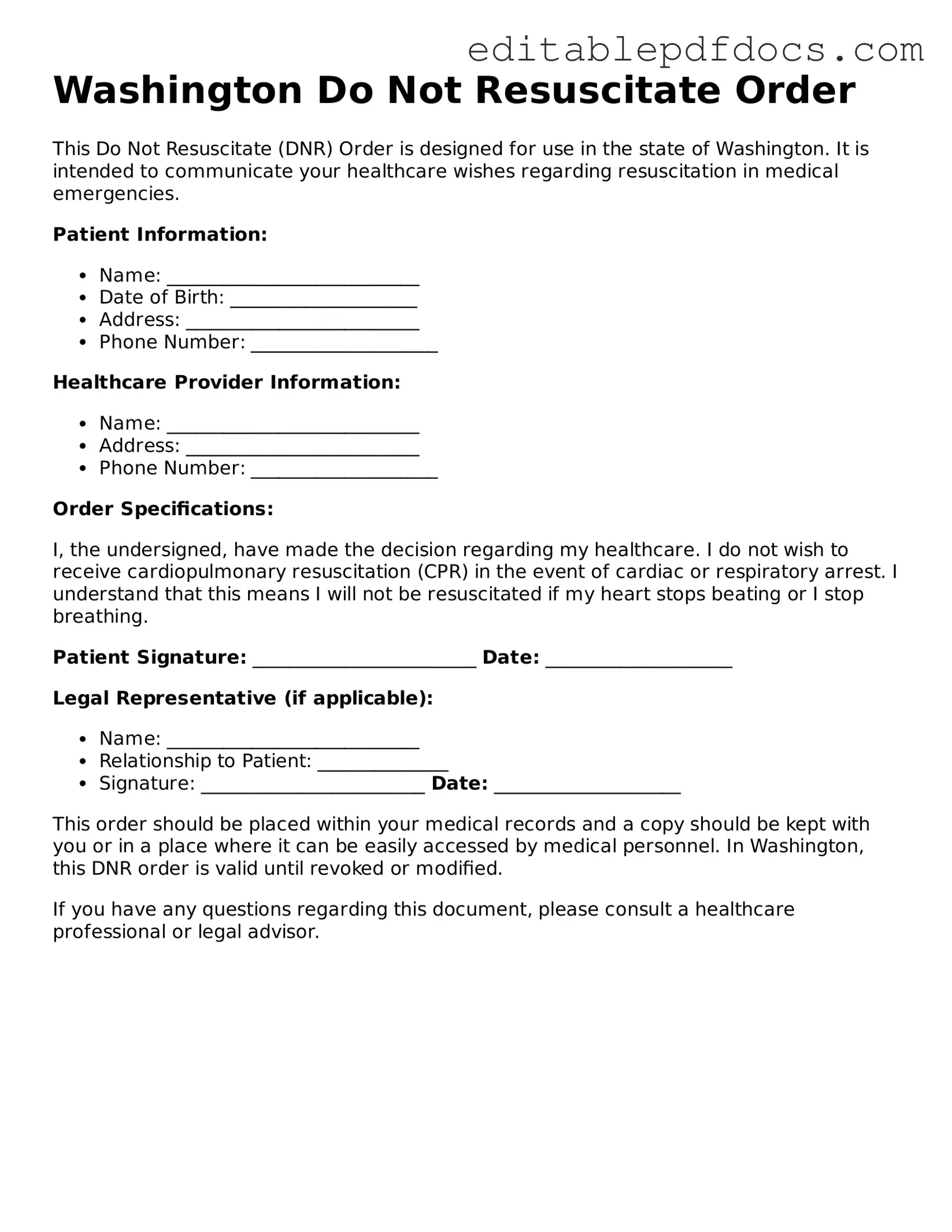Filling out a Do Not Resuscitate (DNR) Order form is a significant decision that requires careful consideration. Unfortunately, many individuals make mistakes that can lead to confusion or unintended consequences. One common error is failing to discuss the decision with family members or healthcare providers. This lack of communication can result in misunderstandings about the individual's wishes, potentially leading to unwanted medical interventions.
Another mistake is not ensuring the form is properly signed and dated. A DNR order without a signature may not be recognized by medical personnel, rendering it ineffective. Additionally, individuals sometimes overlook the importance of having the document witnessed or notarized, depending on state requirements. This oversight can create legal challenges when the order is needed most.
People often neglect to review the form for accuracy. A simple typo in a name or date can invalidate the document. Furthermore, individuals may fill out the form without fully understanding its implications. A DNR order means that no resuscitative measures will be taken, and some may not realize the full extent of what that entails for their medical care.
Another common mistake is failing to provide copies of the DNR order to all relevant parties. Simply having the form completed is not enough; it must be accessible to healthcare providers and family members. Without copies, there is a risk that the order will not be honored in an emergency situation.
Moreover, people sometimes forget to update their DNR orders. Life circumstances change, and so do personal wishes regarding end-of-life care. Regularly reviewing and updating the DNR order ensures that it reflects current preferences. Neglecting this can lead to situations where outdated wishes are followed.
Some individuals may also fail to understand the distinction between a DNR order and other advance directives, such as living wills. While both documents address end-of-life care, they serve different purposes. Confusing these can lead to incomplete or contradictory instructions for healthcare providers.
Lastly, individuals may not consider the emotional impact of their decision on loved ones. A DNR order can be a difficult topic for families to discuss. Failing to address the emotional aspects can result in conflict or distress when the time comes to act on the order. Open conversations about the decision can help alleviate this burden.
